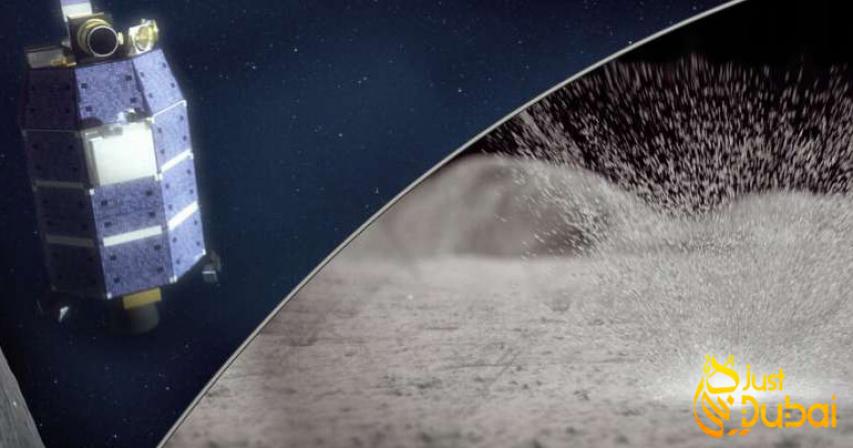Meteoroid strikes eject precious water from Moon: NASA

Meteoroids showers cause the Moon to lose valuable water from under the lunar surface, hampering a potential asset for supporting long haul human investigation of profound space, as indicated by NASA. Models had anticipated that meteoroid effects could discharge water from the Moon as a vapor, however researchers had not yet watched the wonder. Scientists from NASA and the Johns Hopkins University Applied Physics Laboratory in the US discovered many these occasions in information gathered by NASA's Lunar Atmosphere and Dust Environment Explorer (LADEE). LADEE was an automated mission that circled the Moon to assemble point by point data about the structure and sythesis of the slender lunar environment, and decide if dust is hurled into the lunar sky.
JUST IN: Scientists have discovered water is being released on the Moon during meteor showers! 💧🌑 This discovery provides a potential resource for future exploration, improves our understanding of the Moon's geologic past & continued evolution. Details: https://t.co/2zmOazTHL0 pic.twitter.com/oONOrqHOBx
— NASA (@NASA) April 15, 2019
"We followed the greater part of these occasions to realized meteoroid streams, however the truly astounding part is that we likewise discovered proof of four meteoroid streams that were beforehand unfamiliar," said Mehdi Benna of NASA's Goddard Space Flight Center in the US, lead creator of the investigation distributed in Nature Geosciences. There is proof that the Moon has water (H2O) and hydroxyl (OH), an increasingly responsive relative of H2O. Notwithstanding, discusses proceed about the birthplaces of the water, regardless of whether it is broadly appropriated and what amount may be available. "The Moon doesn't have critical measures of H2O or OH in its air more often than not," said Richard Elphic, the LADEE venture researcher at NASA's Ames Research Center in the US.
"Be that as it may, when the Moon went through one of these meteoroid streams, enough vapor was shot out for us to identify it. And after that, when the occasion was finished, the H2O or OH left," Elphic said in an announcement. To discharge water, the meteoroids needed to infiltrate no less than eight centimeters beneath the surface, as indicated by the investigation distributed in the diary Nature Geosciences. Underneath this completely dry top layer lies a meager change layer, at that point a hydrated layer, where water particles likely stick to bits of soil and shake, called regolith. Specialists determined that the hydrated layer has a water convergence of around 200 to 500 sections for each million. This fixation is a lot drier than the driest earthly soil.
Since the material on the lunar surface is feathery, even a meteoroid that is five millimeters crosswise over can infiltrate sufficiently far to discharge a puff of vapor. At the point when a surge of meteoroids descends upon the lunar surface, the freed water will enter the exosphere and spread through it. Around 66% of that vapor escapes into space, however around 33% terrains back on the outside of the Moon. These discoveries could help clarify the stores of ice in virus traps in obscurity scopes of pits close to the shafts. Meteoroid strikes can transport water both into and out of virus traps. The group decided out the likelihood that the majority of the water identified originated from the meteoroids themselves.
"We realize that a portion of the water must originate from the Moon, in light of the fact that the mass of water being discharged is more noteworthy than the water mass inside the meteoroids coming in," said Dana Hurley of the Johns Hopkins University Applied Physics Laboratory. The examination demonstrates that meteoroid impacts discharge water quicker than it tends to be delivered from responses that happen when the sun oriented breeze hits the lunar surface. "The water being lost is likely antiquated, either going back to the development of the Moon or kept from the get-go in its history," said Benna.






Comments